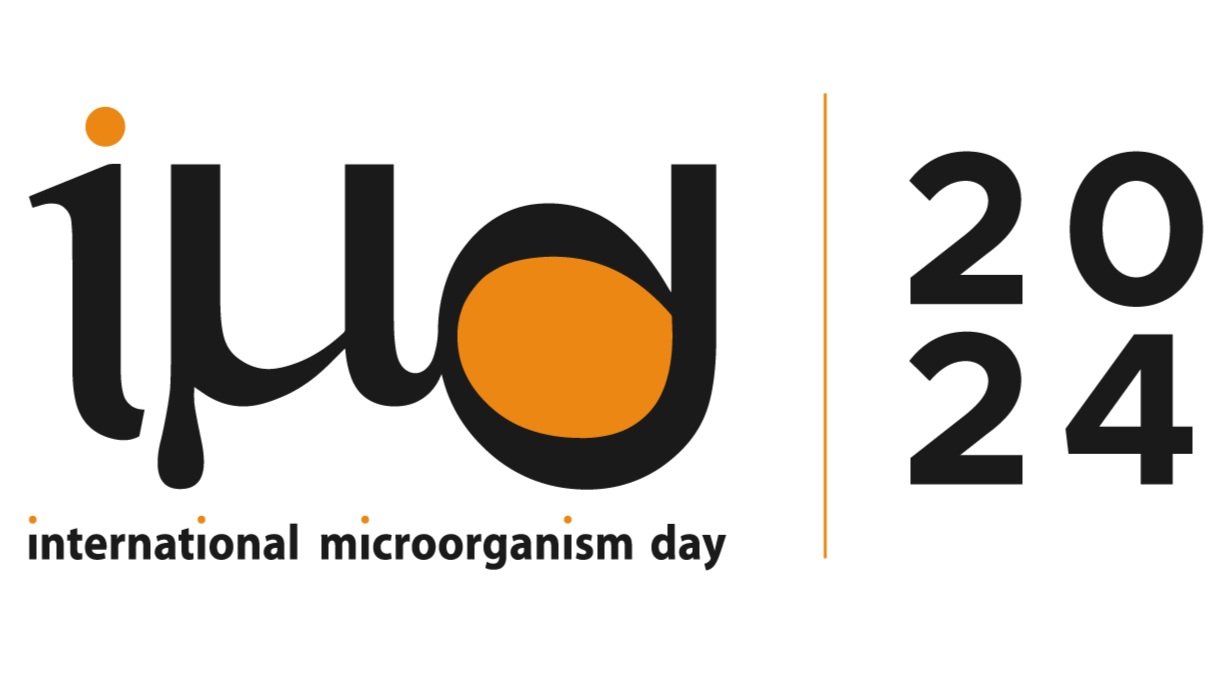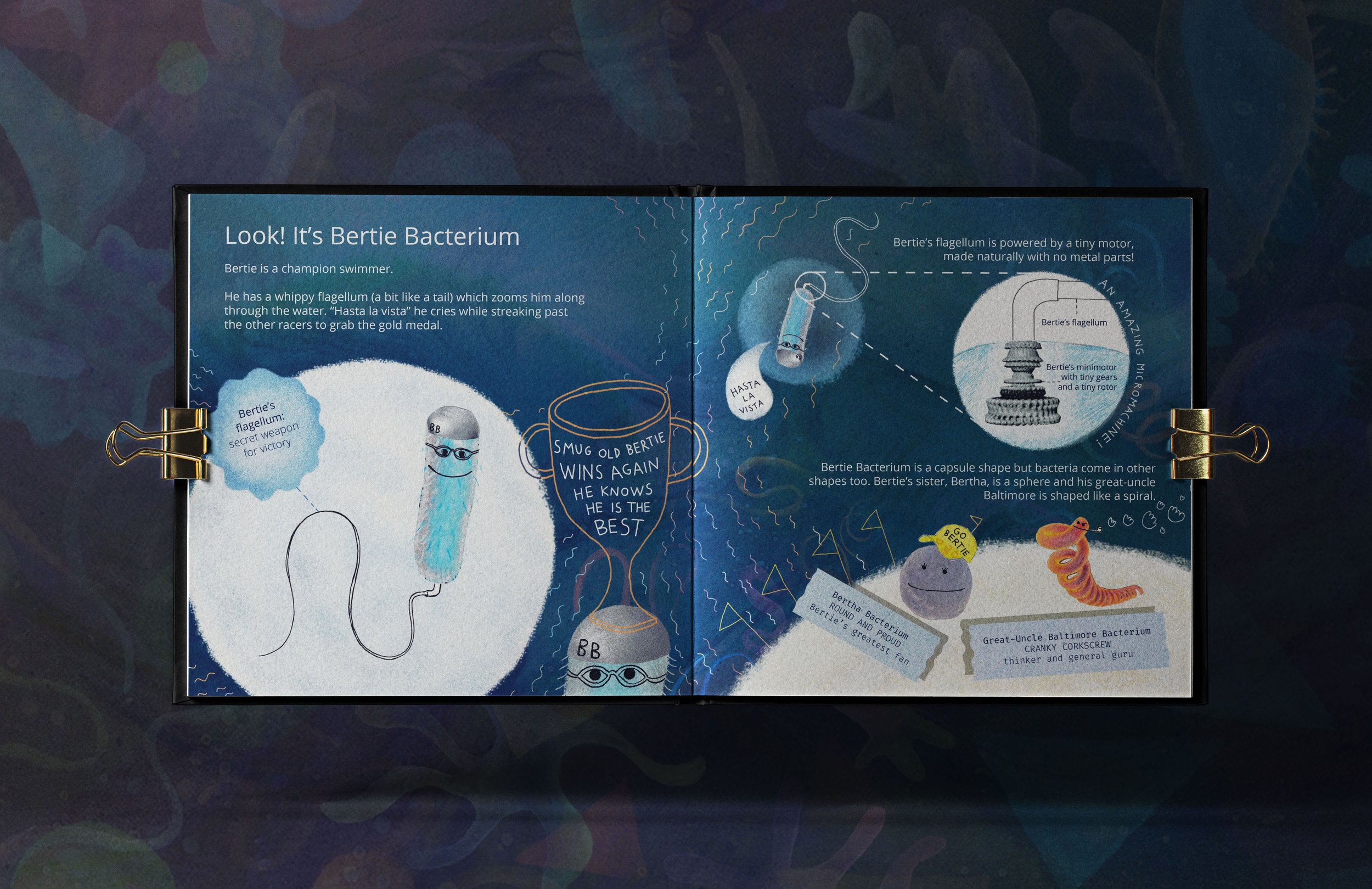Exploring the Wonders of Microbiology: Inspiring Kids through Education
Exploring the Wonders of Microbiology: Inspiring Kids through Education
By Lindsey Millar
Microbiology, the fascinating world of microscopic organisms, holds a plethora of wonders waiting to be discovered. Introducing kids to the captivating field of microbiology can ignite their scientific curiosity, promote health and hygiene practices, and instill a sense of environmental awareness. In this blog post, we will delve into the importance of teaching kids about microbiology, emphasizing the benefits of building a strong foundation in this field. Additionally, we will explore how a newly released book can serve as a valuable resource in this educational journey.
Building Science Curiosity
At an early age, children possess an innate sense of curiosity and a thirst for knowledge. Teaching them about microbiology not only satisfies their curiosity but also nurtures their scientific thinking and problem-solving skills. By introducing kids to the diverse microscopic world of bacteria, viruses, fungi, and more, we open up a realm of endless possibilities for exploration. Microbiology encourages children to ask questions, conduct experiments, and develop critical thinking abilities: inter-disciplinary skills which can be carried through life-long learning, paving the way for future scientific discoveries.
Promoting Health and Hygiene
Microbiology plays a pivotal role in understanding the importance of personal health and hygiene. Teaching kids about the impact of microorganisms on our bodies and the environment can instill healthy habits that last a lifetime. By learning about how germs spread and the necessity of proper handwashing techniques, children become more conscious of their actions and take proactive steps to prevent the transmission of diseases. Educating kids about microbiology empowers them to make informed decisions regarding their health and well-being.
It is also important to foster an understanding that human-associated microbiota are important for healthy immunity. Society often lacks a nuanced view of the positive roles microorganisms play in health, resulting in public wariness of words such as ”germs”, and this may sometimes manifest as germaphobia (Robinson et al., 2021). Often children’s first exposure to microbes is through illness and in relation to their negative effect on our bodies. Through a rounded introduction to microbiology, where microorganisms are normalized as integral to our lives, we can ensure that their experience is balanced, and that curiosity is not stifled by fear.
Fostering Environmental Awareness
Microbiology not only affects our bodies but also has a significant impact on the environment. Teaching kids about the role of microorganisms in ecosystems, such as decomposition, nitrogen fixation, and nutrient cycling, helps them appreciate the delicate balance of nature. Understanding how microscopic organisms contribute to the overall health of our planet can inspire kids to become environmentally conscious and adopt sustainable practices. As the damage being done to our planet by human activity becomes ever more stark, the importance of bioremediation to contain pollution is a useful tool for the next generation to grasp. Recent advances in microbial-assisted remediation technologies make solutions of this kind increasingly attractive (Sharma et al., 2022). By incorporating microbiology into their education, we can raise a generation of individuals who prioritize environmental conservation.
Introducing Wonderful World of the Small: A First Book of Microbiology
Front Cover of Wonderful World of the Small: A First Book of Microbiology. Copyright © Lindsey Jane Millar 2022
Wonderful World of the Small: A First Book of Microbiology is an exciting microbiology book for children, written by Dr. Lindsey Millar and illustrated by Vivien Sárkány. This captivating book aims to promote early years education in microbiology and ignite the interest of young minds, inspiring the scientists of the future.
In this delightful picture book, young children are gently introduced to various types of microorganism and related concepts, creating a playful and engaging introduction to the world of microbiology. Within its pages, ten zany microbial characters eagerly await discovery, including the likes of Bertie Bacterium, a champion swimmer with an incredible microscopic motor! The colorful illustrations, presented in a quirky lab-notebook style, beautifully capture the diversity of the microbial kingdom and convey the wonder of observing these tiny specimens through a microscope lens. Wonderful World of the Small takes young readers on a fun-filled learning journey, sparking their imagination and opening their minds to the wonders of microbiology.
“WHOOSH! and you’re there ... in a secret place full of incredible tiny creatures living extraordinary lives.”
Author Lindsey Millar was inspired by old microbiological texts, such as Philip Henry Gosse’s Evenings at the Microscope: or, Researches Among the Minuter Organs and Forms of Animal Life (Gosse, 1859) and Agnes Catlow’s Drops of Water: their Marvellous and Beautiful Inhabitants Displayed by the Microscope (Catlow, 1851), as well as by the many picture books she read to her three young children. She set out to create a first book of microbiology with traditional charm and a fresh sense of wonder and discovery at its heart.
When Antonie van Leeuwenhoek (1632–1723), universally acknowledged as the father of microbiology, first discovered the microbial world using his own, single-lensed microscopes, he called the minute bodies he observed ”animalcules” or ”little animals” (Lane, 2015). The concept of microorganisms as small creatures was central to the development of Wonderful World of the Small, harking back to these historical roots and the discovery of a previously unimagined microcosmos. The title aims to capture some of the amazement and awe in that initial uncovering of a hidden realm bursting with multitudes of tiny organisms. Each of the anthropomorphized microorganisms featured in the book has been given a distinct occupation and personality to evoke the feeling of busy, everyday activity in a secret world, running in tandem with our own. By presenting the microbial world in this relatable way, children can start to incorporate it into their thinking on a fundamental level. Scientific facts are carefully balanced with the fictional elements to allow freedom of imagination while learning.
Inner page spread showing Bertie Bacterium from Wonderful World of the Small: A First Book of Microbiology. Copyright © Lindsey Jane Millar 2022
You can find Wonderful World of the Small: A First Book of Microbiology online, available for purchase from popular platforms such as Amazon, Etsy, and Waterstones. To learn more about the book and for contact details, please visit the official website at www.secretdoorpress.com
Recent comments from children at a London school include “It was interesting to learn about the microscopic world. It’s amazing what’s down there!!!” (Girl, aged 8) and “Cool book. I’m going to ask for a microscope for my birthday.” (Boy, aged 7).
Teaching kids about microbiology goes beyond rote memorization of facts; it is about igniting their curiosity, promoting health and hygiene, and nurturing environmental awareness. By introducing them to the microscopic world, we equip children with essential skills and knowledge that will benefit them throughout their lives. With resources like Wonderful World of the Small we can make this learning experience even more enjoyable and impactful. Let's inspire our kids to embark on a fascinating journey through microbiology and witness the wonders it holds.
References
Robinson, JM, Cameron, R, Jorgensen, A (2021) Germaphobia! Does our relationship with and knowledge of biodiversity affect our attitudes toward microbes? Frontiers in Psychology 12: 678752. https://doi.org/10.3389/fpsyg.2021.678752
Sharma, P, Bano, A, Singh, SP, Dubey, NK, Chandra, R and Iqbal, HMN (2022) Recent Advances in Microbial-Assisted Remediation Strategies for Toxic Contaminants. Cleaner Chemical Engineering 2: 100020. https://doi.org/10.1016/j.clce.2022.100020
Gosse, PH (1859) Evenings at the Microscope: or, Researches Among the Minuter Organs and Forms of Animal Life. Society for Promoting Christian Knowledge https://encore.st-andrews.ac.uk/iii/encore/record/C_Rb1353355
Catlow, A (1851) Drops of Water: their Marvellous and Beautiful Inhabitants Displayed by the Microscope. Reeve and Benham https://encore.st-andrews.ac.uk/iii/encore/record/C_Rb1364268
Lane, N (2015) The Unseen World: Reflections on Leeuwenhoek (1677) ’Concerning Little Animals’. Philosophical Transactions of the Royal Society B 370: 20140344.20140344. https://dx.doi.org/10.1098/rstb.2014.0344



